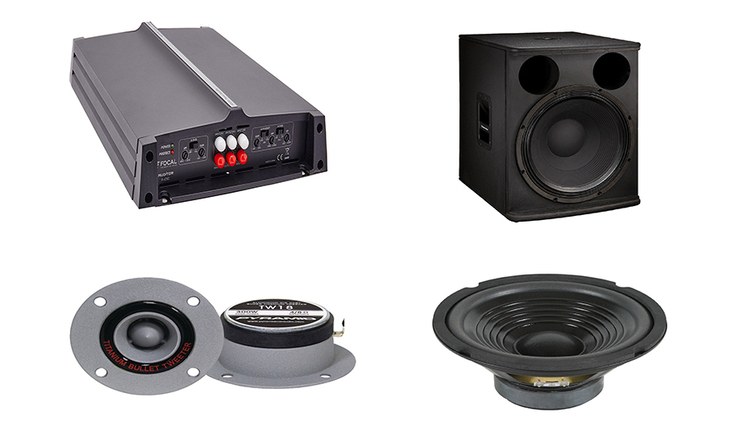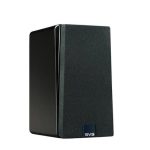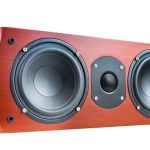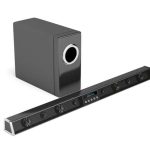Everyone loves listening to high-quality sound, be it listening to music, watching a movie, or listening to a speech. Getting the best sound quality requires having the best sound equipment. Most importantly, you should have high-quality speakers to enjoy high-quality sound.
In the world of sound equipment, you’ll hear about woofers, subwoofers, speakers, tweeters, and amplifiers. But what are they? What do they do in sound reproduction? If you have such questions and more in mind about these sound equipment, then you’ve landed on the right page. This article discusses everything you need to know about this sound equipment.
Speakers
Speakers, also known as loudspeakers, are sound equipment that converts electric current into sound waves. Loudspeakers are available in three different types including moving coil loudspeakers, horn loudspeakers, and electrostatic loudspeakers.
Moving coil loudspeakers are the most common type of speaker available today. A typical moving coil loudspeaker comprises a cone fitted to a voice coil. The voice coil is mounted in a magnetic field. As current flows through the coil, it vibrates within the magnetic field and moves the cone. Consequently, the cone moves air, thereby producing sound. That way, electric current from an audio source is converted into sound

Horn loudspeakers use the same technology to reproduce sound as moving coil loudspeakers but have a horn-like structure that magnifies the vibrations from the diaphragm. This makes them suitable for applications where loud sound is needed such as outdoor speaker systems and public address systems.
On the other hand, electrostatic speakers are different from horn and moving coil loudspeakers. They’re the rarest type of loudspeakers. Their working principle uses a membrane that’s suspended within an electrostatic field.
Loudspeakers can be as small as those found in cell phones and laptops or as large as those found in home theatre systems, cars, and PA systems. They’re categorized based on their frequency response including high-frequency, mid-range frequency, and low frequency. High-frequency speakers are especially known as tweeters. Mid-range frequency speakers are known as mid-range speakers/drivers. Low-frequency speakers are either subwoofers or woofers.
Woofers
Basically, a woofer is a type of loudspeaker that’s specially designed to reproduce low frequencies. Woofers reproduce audible low frequencies such as voices, sound effects, and sounds from some musical instruments.
A woofer functions using an electro-dynamic system that includes a cone and voice coil positioned in a magnetic field. The system reproduces a linear motion when current passes through it. The cone pushes a lot of air to yield low-frequency sounds. A woofer covers the frequency range of between 20 Hz to 2 kHz.
Woofers vary in size, ranging from as little as 4 inches to as big as 15 inches. The size is measured in diameter. Small-sized woofers are mostly found in bookshelf speakers. Medium-sized woofers are mostly found in floor-standing speakers while larger ones are often used in PA systems, car music systems, and Hi-Fi home applications.
A subwoofer is enclosed in a speaker enclosure. Enclosures come in different sizes but are either sealed or ported. Sealed enclosures allow for deeper and cleaner bass while ported enclosures allow for louder bass.
Subwoofers
A subwoofer is a type of loudspeaker that’s dedicated to reproducing lower frequencies than a regular woofer. Essentially, a subwoofer reproduces sound in the frequency range of 20 Hz to 200 Hz. These lower frequencies are typically produced by musical instruments such as pipe organs, bass guitars, and kick drums. It also reproduces certain sound effects such as explosions in movies.
Considering the lower frequencies reproduced by subwoofers, it makes them useful for listening to music with heavy basses such as electronic dance music and hip-hop. Subwoofers are also great for home-theatre systems with surround sound.
Most regular loudspeakers drop off the sound at around 50 Hz. Thus, you won’t enjoy full bass unless you install a subwoofer. Since a subwoofer hits the lowest frequencies, including those beyond the limit of a human ear, you won’t miss out on any bass notes.
Subwoofer placement matters a lot in determining the kind of bass quality you’ll get. For instance, if you want to place a subwoofer in your living room, you need to find a sweet spot for the best results. You may have to rearrange some furniture such that the subwoofer isn’t placed behind any furniture. With the best subwoofer placement, you can enjoy surround sound or 3D sound.
Without a subwoofer, regular speakers tend to distort when turning the volume up. With a subwoofer, you can regulate the volume of regular speakers to a level where they won’t distort and turn the subwoofer volume up to enjoy a loud sound and deep bass without distortion. That way, they relieve regular speakers of the tough task of reproducing low frequencies.
Tweeters
Tweeters are a special type of speaker that reproduce high frequencies. High-frequency sounds are also known as treble. These are sounds in the frequency range of between 2 kHz to 20 kHz. They’re the upper limit of frequencies that a human ear can hear. You can also find a type of tweeter known as super tweeters that reproduce ultrasonic sound frequencies beyond 20 kHz.
The design behind tweeters brings about several types of tweeters. They include cone tweeters, dome tweeters, horn tweeters, planar magnetic tweeters, ribbon tweeters, plasma tweeters, electrostatic tweeters, and air motion transformer (AMT) tweeters.
Dome tweeters are among the most common type of tweeters. These tweeters have a front plate attached to a magnet assembly. They don’t have a basket or frame. Dome tweeters are categorized as either soft dome or hard dome tweeters. Soft dome tweeters feature a front plate made of soft materials such as fabric or silk. On the other hand, hard dome tweeters are made of a hard front plate material such as aluminum or titanium metals. Hard dome tweeters deliver louder and brighter highs than soft dome tweeters.
Cone tweeters usually have a cone, coil, and magnet. They work like regular moving coil speakers to reproduce highs. The cone material is typically made of paper. They are less expensive with lower sound quality than dome tweeters and are typically used as factory car speakers.
Horn tweeters are another common type of tweeter. They’re also known as bullet tweeters. They’re known as horn/bullet tweeters due to their bullet-shaped dome within the flared outer horn design. Their design allows for louder highs. This makes them ideal for use in PA speaker systems and cars with powerful subwoofers.
Planar magnetic tweeters, ribbon tweeters, plasma tweeters, electrostatic tweeters, and AMT tweeters are less common. When choosing a tweeter for your sound system, you should consider the type of speakers you have, the kind of highs you want, and your budget.
Amplifiers
Amplifiers are also important in sound. Basically, an amplifier is a device that takes a weak signal to strengthen it and output a stronger signal. Most audio sources produce weak signals that are not powerful enough to drive larger speakers, especially woofers and subwoofers. An amplifier comes in handy as it’s able to take a weak signal from an audio source such as an MP3 player, microphone, smartphone, radio, or car stereo to amplify it and produce a strong signal that can drive a powerful speaker.
diodes. The circuit increases the strength of an audio signal without interfering with the original sound. That way, it outputs the original sound but with a stronger current.
Amplifiers are categorized into different classes. The most common amplifier classes include Class A, B, AB, C, and D. Class A amplifiers offer the best quality in the output signal but are inefficient, large, consume a lot of power, and heat up easily. Class B amplifiers are more efficient, more affordable, don’t heat up easily, but offer poorer output quality.
Class AB amplifiers are a compromise of both Classes A and B but deliver the efficiency offered by Class B amps and output quality offered by Class A amps. Although Class C amps offer higher efficiency than A and B, they’re poorer in the output quality. A Class D amplifier operates as an electronic switch for increased efficiency. Class D amps are small-sized and lightweight but may cause interference and distortion.
Conclusion
As you can see, there’re certain differences between woofers, subwoofers, tweeters, and amplifiers, but they’re all special types of sound equipment. Regardless of the kind of speaker you want, it’s important to consider their performance. For instance, the power rating of the speaker largely determines how powerful and loud it is. Also, you need to consider its sensitivity, which determines the efficiency of the speaker in converting current into sound. When it comes to amplifiers, the kind of amplifier you’ll choose should depend on the power of your sound system. For instance, powering several powerful speakers requires a more powerful amplifier. Thus, make your choice wisely when choosing any of these sound equipment.
Michael Evanchuk is a San Francisco-based sound engineer with 20 years’ experience installing, troubleshooting, and repairing commercial, automotive, and household sound equipment. Evanchuk owns an auto stereo center, where he offers highly competitive car audio installation and repair services. He has written dozens of articles on different sound engineering topics, all of which have been published in leading journals, blogs, and websites.





